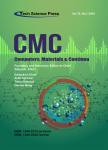Transmission Control under Multi-Service Disciplines in Wireless Sensor Networks
作者机构:School of Computer and Communication EngineeringUniversity of Science and Technology BeijingBeijing100083China Department of Electronics and Communication EngineeringBeijing Electronics Science and Technology InstituteBeijing100070China Department of ManagementUniversity of BejaiaBejaia06000Algeria
出 版 物:《Computers, Materials & Continua》 (计算机、材料和连续体(英文))
年 卷 期:2021年第68卷第8期
页 面:2127-2143页
核心收录:
学科分类:0809[工学-电子科学与技术(可授工学、理学学位)] 08[工学] 0812[工学-计算机科学与技术(可授工学、理学学位)]
基 金:supported by the Fundamental Research Funds for the Central Universities(Grant.No.FRF-BD-20-11A),C.G.(Cheng Gong) the Scientific and Technological Innovation Foundation of Shunde Graduate School,C.G.(Cheng Gong),USTB(Grant No.BK19AF005) the Industry University Research Cooperation Project No.39110067,C.G.(Cheng Gong)
主 题:WSNs transmission control queuing game service disciplines
摘 要:The wireless sensor network(WSN),as the terminal data acquisition system of the 5G network,has attracted attention due to advantages such as low cost and easy *** development is mainly restricted by *** traditional transmission control scheme is not suitable for WSNs due to the significant information interaction.A switchable transmission control scheme for WSNs based on a queuing game(SQGTC)is proposed to improve network *** that sensor nodes compete for the resources of sink nodes to realize data transmission,the competitive relationship between nodes is described from the perspective of a *** types of sensor node requests require a sink node to provide different service *** models of social welfare are established for a sink node under the service disciplines of first-come,first-served(FCFS),egalitarian processor sharing(EPS),and shortest service first(SSF).The optimal service strategies are obtained by maximizing social *** sensor nodes provide the expected benefits and satisfy the service requirements of the requests,and the sink node switches the transmission control strategy for the *** results show that the proposed scheme improves the data transmission efficiency of WSNs and achieves the optimal allocation of resources.



